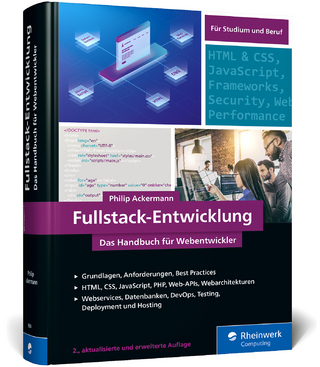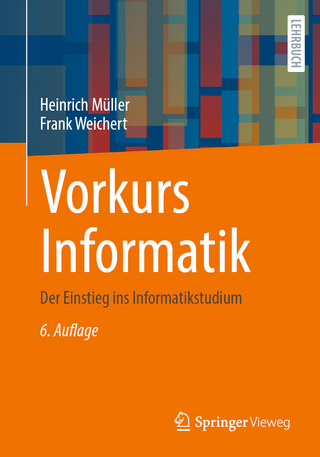
Programming in Haskell
Seiten
2007
Cambridge University Press (Verlag)
978-0-521-87172-3 (ISBN)
Cambridge University Press (Verlag)
978-0-521-87172-3 (ISBN)
- Titel erscheint in neuer Auflage
- Artikel merken
Zu diesem Artikel existiert eine Nachauflage
This introduction is ideal for beginners as it requires no previous programming experience and all concepts are explained from first principles via carefully chosen examples. Each chapter includes exercises that range from the straightforward to extended projects, plus suggestions for further reading on more advanced topics.
Haskell is one of the leading languages for teaching functional programming, enabling students to write simpler and cleaner code, and to learn how to structure and reason about programs. This introduction is ideal for beginners: it requires no previous programming experience and all concepts are explained from first principles via carefully chosen examples. Each chapter includes exercises that range from the straightforward to extended projects, plus suggestions for further reading on more advanced topics. The author is a leading Haskell researcher and instructor, well-known for his teaching skills. The presentation is clear and simple, and benefits from having been refined and class-tested over several years. The result is a text that can be used with courses, or for self-learning. Features include freely accessible Powerpoint slides for each chapter, solutions to exercises and examination questions (with solutions) available to instructors, and a downloadable code that's fully compliant with the latest Haskell release.
Haskell is one of the leading languages for teaching functional programming, enabling students to write simpler and cleaner code, and to learn how to structure and reason about programs. This introduction is ideal for beginners: it requires no previous programming experience and all concepts are explained from first principles via carefully chosen examples. Each chapter includes exercises that range from the straightforward to extended projects, plus suggestions for further reading on more advanced topics. The author is a leading Haskell researcher and instructor, well-known for his teaching skills. The presentation is clear and simple, and benefits from having been refined and class-tested over several years. The result is a text that can be used with courses, or for self-learning. Features include freely accessible Powerpoint slides for each chapter, solutions to exercises and examination questions (with solutions) available to instructors, and a downloadable code that's fully compliant with the latest Haskell release.
Graham Hutton is Professor of Computer Science at the University of Nottingham, where he co-leads the Functional Programming Laboratory.
Preface; 1. Introduction; 2. First steps; 3. Types and classes; 4. Defining functions; 5. List comprehensions; 6. Recursive functions; 7. Higher-order functions; 8. Functional parsers; 9. Interactive programs; 10. Declaring types and classes; 11. The countdown problem; 12. Lazy evaluation; 13. Reasoning about programs; Appendix A: a standard prelude; Appendix B: symbol table; Bibliography; Index.
| Erscheint lt. Verlag | 18.1.2007 |
|---|---|
| Zusatzinfo | Worked examples or Exercises |
| Verlagsort | Cambridge |
| Sprache | englisch |
| Maße | 194 x 252 mm |
| Gewicht | 507 g |
| Themenwelt | Mathematik / Informatik ► Informatik ► Programmiersprachen / -werkzeuge |
| Mathematik / Informatik ► Informatik ► Software Entwicklung | |
| Mathematik / Informatik ► Informatik ► Theorie / Studium | |
| Mathematik / Informatik ► Mathematik ► Analysis | |
| ISBN-10 | 0-521-87172-7 / 0521871727 |
| ISBN-13 | 978-0-521-87172-3 / 9780521871723 |
| Zustand | Neuware |
| Informationen gemäß Produktsicherheitsverordnung (GPSR) | |
| Haben Sie eine Frage zum Produkt? |
Mehr entdecken
aus dem Bereich
aus dem Bereich
Das Handbuch für Webentwickler
Buch | Hardcover (2023)
Rheinwerk (Verlag)
49,90 €
Der Einstieg ins Informatikstudium
Buch | Softcover (2023)
Springer Vieweg (Verlag)
34,99 €
Grundlagen und praktische Anwendungen von Transpondern, kontaktlosen …
Buch (2023)
Hanser (Verlag)
89,99 €



